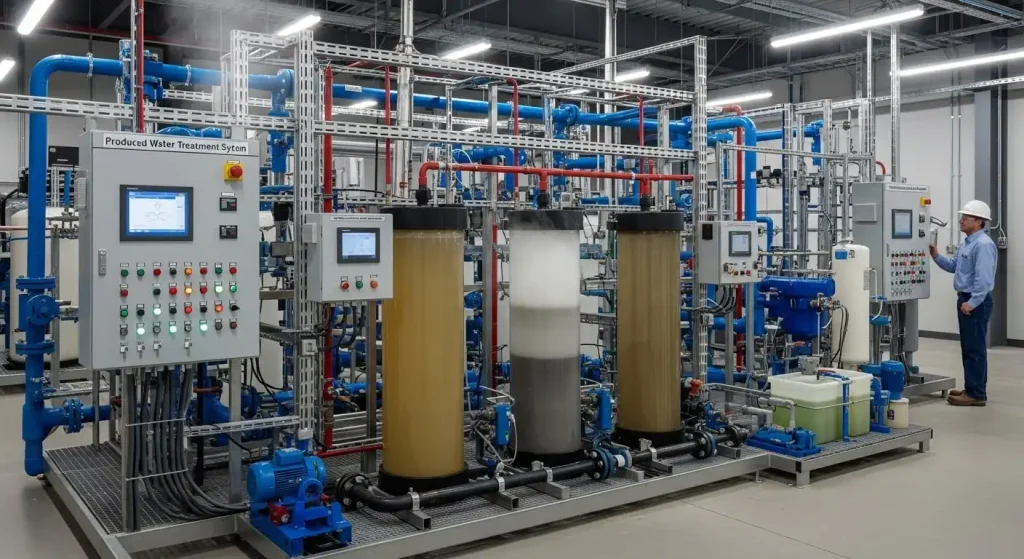
## Design and Fabrication of Separator Internals: The Heart of Efficient Separation
Separators are vital components in a multitude of industries, from oil & gas and chemical processing to food and pharmaceuticals. They are responsible for separating mixtures into their constituent parts, ensuring product purity, efficiency, and safety. However, the separator itself is only as good as its **internals**, the intricate components that dictate how the separation process unfolds. This article delves into the design and fabrication of these critical internals, highlighting their importance and the considerations involved in their creation.
**The Crucial Role of Separator Internals**
Separator internals are the workhorses of the separation process. They are responsible for:
* **Flow Distribution:** Ensuring a uniform flow of the mixture across the separation area, preventing channeling and maximizing contact time.
* **Phase Disengagement:** Facilitating the separation of different phases (e.g., liquid-liquid, liquid-gas, solid-liquid) through gravity, coalescence, or other mechanisms.
* **Mist Elimination:** Removing entrained liquid droplets from the gas stream, preventing carryover and downstream contamination.
* **Solid Removal:** Capturing solid particles, protecting downstream equipment and ensuring product quality.
Without properly designed and fabricated internals, separators can suffer from reduced efficiency, increased operating costs, and even equipment damage.
**Key Types of Separator Internals and Their Design Considerations**
The specific types of internals used depend heavily on the application and the properties of the mixture being separated. Here are some common examples:
* **Inlet Devices:** These are the first point of contact for the incoming mixture. Common designs include:
* **Inlet Diverters:** Deflect the incoming flow, reducing its momentum and promoting initial phase separation.
* **Inlet Cyclones:** Utilize centrifugal force to separate heavier components (liquids or solids) from the gas stream.
* **Spreader Plates:** Distribute the flow evenly across the separator cross-section.
**Design Considerations:** Inlet devices must be robust enough to withstand the impact of the incoming flow, prevent erosion, and provide efficient initial separation.
* **Coalescers:** These promote the merging of small liquid droplets into larger, easier-to-separate droplets. Common types include:
* **Wire Mesh Coalescers:** Provide a large surface area for droplet capture and coalescence.
* **Vane Coalescers:** Utilize a series of corrugated plates to force droplets to impinge and coalesce.
**Design Considerations:** Coalescer selection depends on the liquid droplet size distribution, surface tension, and viscosity. Pressure drop and fouling potential are also important considerations.
* **Demisters/Mist Eliminators:** These remove fine liquid droplets (mist) from the gas stream. Common designs include:
* **Wire Mesh Demisters:** Similar to wire mesh coalescers, but designed for finer droplet removal.
* **Vane Demisters:** Employ a series of vanes to change the gas flow direction, causing droplets to impinge and be collected.
* **Fiber Bed Filters:** Utilize a bed of fibers to capture even the smallest droplets.
**Design Considerations:** Demister selection depends on the droplet size distribution, gas velocity, and allowable pressure drop.
* **Weirs and Baffles:** These control liquid levels and flow patterns within the separator, ensuring proper phase separation and residence time.
**Design Considerations:** Weir height and baffle placement are crucial for maintaining stable liquid levels and preventing re-entrainment.
* **Trays and Packing:** Used in distillation and absorption columns within separators to enhance mass transfer between liquid and gas phases.
**Design Considerations:** Tray spacing, packing type, and distributor design are critical for achieving optimal separation performance.
**Fabrication Processes and Materials**
The fabrication of separator internals requires precision and adherence to strict quality standards. Common fabrication processes include:
* **Cutting and Forming:** Plates, sheets, and other components are cut and formed to the required shapes using techniques like laser cutting, waterjet cutting, bending, and rolling.
* **Welding:** Welding is a critical process for joining components and ensuring structural integrity. Specialized welding techniques, such as GTAW (Gas Tungsten Arc Welding) and GMAW (Gas Metal Arc Welding), are often used to ensure high-quality welds.
* **Machining:** Machining processes, such as turning, milling, and drilling, are used to create precise features and tolerances.
* **Assembly:** Components are carefully assembled according to the design specifications.
The selection of materials is crucial for ensuring the longevity and performance of the internals. Common materials include:
* **Carbon Steel:** A cost-effective option for many applications, but susceptible to corrosion in certain environments.
* **Stainless Steel:** Offers excellent corrosion resistance and is suitable for a wide range of applications.
* **Duplex Stainless Steel:** Provides even higher corrosion resistance and strength compared to standard stainless steel.
* **Special Alloys:** For highly corrosive or demanding environments, specialized alloys like Hastelloy, Inconel, and Monel may be required.
**Quality Control and Inspection**
Rigorous quality control and inspection are essential to ensure that separator internals meet the required specifications and performance criteria. Common quality control procedures include:
* **Material Certification:** Verifying that the materials used meet the required specifications.
* **Dimensional Inspection:** Checking the dimensions of the fabricated components to ensure they are within tolerance.
* **Weld Inspection:** Inspecting welds for defects using techniques like visual inspection, radiography, and ultrasonic testing.
* **Performance Testing:** Evaluating the performance of the internals in simulated or actual operating conditions.
**Conclusion**
Separator internals are the unsung heroes of efficient separation. Their design and fabrication require a deep understanding of fluid dynamics, materials science, and manufacturing processes. By carefully considering the application requirements, selecting appropriate materials and fabrication techniques, and implementing rigorous quality control procedures, it is possible to create separator internals that deliver optimal performance, reliability, and longevity. Investing in high-quality internals is crucial for maximizing the efficiency and profitability of separation processes across a wide range of industries.